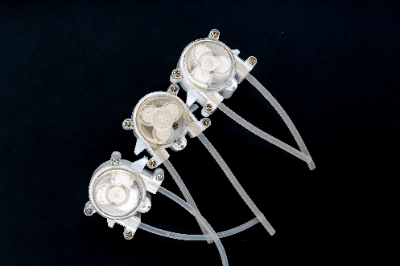What Is a Hot Press?

A hot press is a device that performs processing by applying high pressure to a material heated to a high temperature. It is widely used for metals, making them soft under high temperatures and enabling plastic processing into desired shapes. Pressing can be uniaxial, applying pressure in one direction, or multiaxial, applying pressure from various directions. Hot presses are used for processing ceramics at temperatures ranging from several hundred to more than 2,000 degrees Celsius.
Uses of Hot Presses
Hot presses are used in two main ways: as a joining hot press for metals and composite materials at relatively low temperatures and as a sintering hot press for ceramics and metal oxide film substrates. The latter type requires high temperatures to process materials like aluminum oxide.
Principle of Hot Presses
Hot presses use hydraulic pressure, ranging from 1 MPa to 70 MPa, depending on the equipment. Single-axis presses apply pressure in one direction, but multiaxial types can apply pressure from several directions. Heaters in these presses can reach up to about 2,500°C, often using resistance heating with graphite heaters.
Simple hot presses operate by heating two flat plates, placing material between them, and pressing, and are used for producing resin sheets and other materials. Due to the high temperatures involved, the finished products often need to cool down before they can be handled.
Hot Presses of High-Tensile Strength Materials
High-tensile strength materials, used in automobile frames, are lighter and thinner than traditional materials but difficult to form. Hot presses heat these materials, making them softer and easier to shape while reducing springback issues. This process results in accurate dimensional accuracy and less burden on the die.
Advantages and Disadvantages of Hot Presses
Hot presses facilitate the forming process and increase product strength through a quenching effect. They make products soft during formation and hard afterward. However, they are costly, require a furnace, and have longer production times due to cooling requirements. Additionally, there are limitations in post-processing steps, such as changing the product’s shape or adding features.